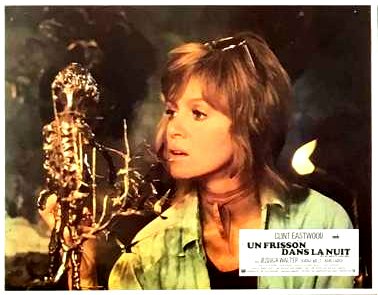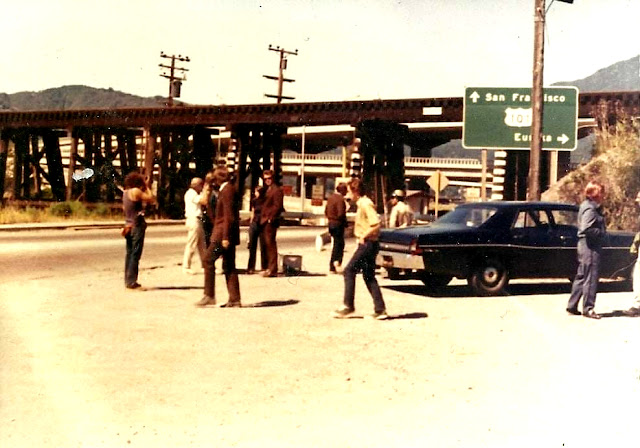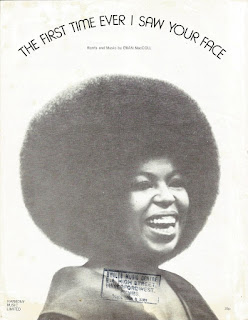Happy Christmas and yearly review 2021
As always, I would like to begin by wishing Clint a very happy Christmas on behalf of all his fans and everyone connected with the Archive. I would also like to thank and wish a very happy Christmas to everyone who helps me to bring all of this material here and for the benefit of the fans.
To start with some positive news, this year we have averaged over one post per week, which is up on last year. On top of that, there have of course been hundreds of updates on many of the dedicated pages.
We began the year with reports of casting for Clint’s next project which was his adaptation of Cry Macho. We also posted a cracking photo opportunity which featured Clint judging a teen Miss Jersey contest at Palisades Amusement Park in 1962. Whilst in February we posted a couple of incredibly rare and seldom seen double crown posters for both Where Eagles Dare and Kelly’s Heroes.
In March and April we received further updates on Cry Macho including that the score would be composed by Mark Mancina and that the film would get an October 2021 release date. We also posted Where Eagles Dare: Snowballs at dawn, a selection of photos which captured both Clint and actor Darren Nesbitt taking on each other during the making of the movie.
In May we posted Clint Eastwood Dialogue with Richard Schickel, a wonderful audio interview from 1990, where Clint discusses his career with his old friend in front of a live audience. Lasting some 95 minutes, it’s a very enjoyable listen. Also at the end of the month we celebrated Clint’s 91st Birthday.
The summer got off to a very busy start. In June we began our 50th anniversary celebrations for Dirty Harry and a rather cracking photo of Clint that was new to a great many fans. We also featured an Exclusive Dirty Harry 50th Anniversary painting by our good friend, Graham Kennedy, and a vintage 1970 article on Two Mules for Sister Sara. As part of our Dirty Harry Anniversary we rounded off June with an exclusive interview with the lovely vocalist Sally Stevens who provided the film’s haunting vocal accompaniment to Lalo Schifrin’s incredible score.
In July I began the month by creating a Dirty Harry gallery using my own collection of stills. We also posted a couple of very rare Magnum Force posters. I also posted a couple of rare photos and a feature on Every which way but loose writer Jeremy Joe Kronsberg. The end of July saw our main Dirty Harry focal piece ‘Unearthing the roots of Dirty Harry’ - an original and lengthy article I wrote of how Harry came to the screen.
In August we saw the launch of Cry Macho’s advertising campaign. We also finally saw the release of the complete John Williams score for The Eiger Sanction released in a 2 CD set. And we published some very nice behind the scenes shots from Magnum Force as well as the lovely Japanese blu-ray release of Thunderbolt & Lightfoot.
September was a very busy month, I posted perhaps the most comprehensive collection of the famous Paul Newman and Clint Eastwood photos shot by Terry O’Neill - The Return of Butch Cassidy and the Kidd (see what I did there). We posted a whole host of Cry Macho material including some nice featurettes and the soundtrack release. As we were also celebrating the 50th anniversary of The Beguiled I posted the rare complete set of French lobby stills. We also featured rare artwork from Honkytonk Man by Bill Gold, a rare contact sheet from Hang ‘em high, a rare internal Unforgiven memo from 1984, some great posters, rare flyers and a whole lot more!
In October we published some great French ads from 1964-1972, some rare Spanish EP releases, a lovely piece of Paint your wagon artwork and a pretty cracking make-up test shot from A Fistful of Dollars. By November / December we also ran our 50th Anniversary tribute to Play Misty for Me with an excellent original article, and a look back at the history of Roberta Flack’s The First Time Ever I Saw Your Face. Warner Brothers were also kind enough to supply the 40 film DVD collection for a competition we ran which proved to be very popular. We also unearthed a rather nice self-published book, On the Trail of Bronco Billy - which turned out to be something of a gem! We concluded our Misty celebration by posting the complete 12 stills which made up the original French Lobby set.



















































